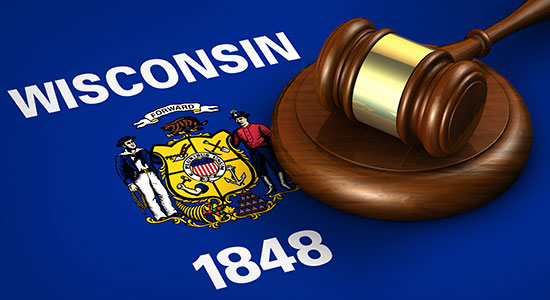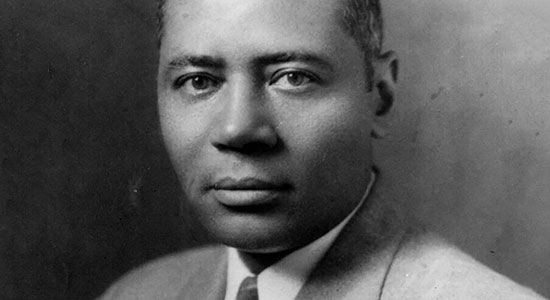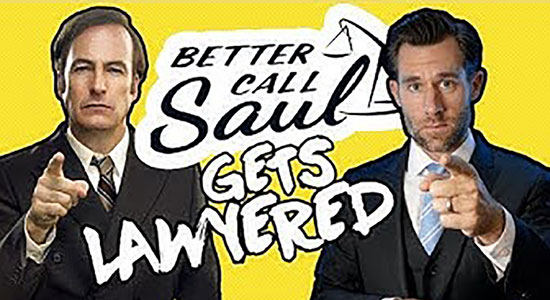On the Radar
Lawsuit Says State is Failing to Provide Legal Representation

Criminal defendants in Ashland and Bayfield counties have filed a federal class action against the state of Wisconsin, claiming excessive delay in appointing legal counsel to represent them violates their constitutional right to a speedy and public trial.
The lawsuit, filed in the U.S. District Court for the Western District of Wisconsin in January, says “the system for indigent defense in Wisconsin has reached a state of crisis.”
Aside from defendants allegedly sitting in jail for up to 74 days without a lawyer, the lawsuit also claims the low $40 per hour rate paid to private bar attorneys who take a large percentage of criminal cases from the State Public Defender’s Office is adding to this state of crisis. That rate is the lowest in the country.
The State Bar of Wisconsin has worked for decades to get that $40 rate increased, including a petition to the Wisconsin Supreme Court in 2018, and will encourage the Wisconsin Legislature to address the issue through the upcoming budget process.
Got a Nugget to Share?
Send your ideas for interesting facts, trends, tips, or other bits and bytes to wislawmag@wisbar.org, or comment below.
By the Numbers
$1 Billion
The amount of investment in legal technology companies in 2018, compared to $233 million in 2017.
Half of the $1 billion invested went to LegalZoom, an online legal services provider that provides automated forms and other legal services to individuals and small businesses.
About $362 million went to companies seeking legal solutions using artificial intelligence, such as LawGeex, a company engaged in providing contract review automation.
Source: Lawsites, LawGeex
From the Archives
Black History Month: Charles Hamilton Houston

Called “one of the 20th century’s most important legal scholars,” Charles Hamilton Houston was an African-American lawyer who “engineered the multi-year legal strategy that led to the unanimous 1954 Supreme Court decision, Brown v. Board of Education, repudiating the doctrine of ‘separate but equal’ schools for black and white children.”
Houston, a 1923 graduate of Harvard Law School, was special counsel to the NAACP and a central figure in the civil rights cases that led up to Brown, including Missouri ex rel. Gaines v. Canada. In that case, Houston argued that denying Lloyd Gaines’ admission to the University of Missouri Law School under state “separate but equal” laws violated the Equal Protection Clause since there was no law school for African-American students in Missouri. The U.S. Supreme Court agreed (7-2).
“Houston designed a strategy of attacking segregation in law schools – forcing states to either create costly parallel law schools or integrate the existing ones,” according to the NAACP. “The strategy had hidden benefits: since law students were predominantly male, Houston sought to neutralize the age-old argument that allowing blacks to attend white institutions would lead to miscegenation, or ‘race-mixing.’ He also reasoned that judges deciding the cases might be more sympathetic to plaintiffs who were pursuing careers in law.”
Houston mentored Thurgood Marshall, who helped argue the Brown case and became the first African-American justice on the U.S. Supreme Court.
Source: NAACP; Charles Hamilton Houston Institute for Race & Justice.
Good Ideas
Legal Eagle: Explaining the Law Through YouTube

In this month’s feature article on National Practice Trends, one commentator notes that “lawyers should be using video for promotional endeavors, such as YouTube videos with basic how-to information.”
Considering YouTube has more than one billion users, the social video platform is a great way to promote your law firm business. But how?
Devin Stone, a trial attorney with a side business (LegalEagle) that helps law students, uses YouTube to explain the law by analyzing law-related TV shows and news events.
In one video, Stone analyzes the first episode of Better Call Saul, whose main character is the lawyer who eventually represents Walter White in Breaking Bad, the Emmy-award winning show about a high school chemistry teacher turned methamphetamine manufacturer.
Stone grades the episodes for “legal realism,” educating viewers about the differences between lawyers and law on TV versus the real world.
He must be doing something right: his LegalEagle YouTube channel has more than 280,000 subscribers and his review of Better Call Saul (episode one) – which is one of many – has more than 1.2 million views.
Out There
The Bambi Sentence

A Missouri judge recently ordered a man convicted of illegally poaching deer to watch the 1942 Disney Classic, Bambi, once per month while serving a one-year jail sentence. The prosecutor on the case against David Berry Jr. – convicted for spotlighting deer to make kills easier, then taking only their heads as trophies – said the judge was “hoping there will be some kind of emotional reaction.”
Bambi, of course, follows the triumphs and tragedies of a fawn growing up in the forest. Along the way [spoiler alert], Bambi’s mother is killed by a hunter.
Source: New York Times; Riverfront Times
Tech Tip
Are You Properly Redacting Your Court-Filed Documents?

Failing to properly redact confidential information, even accidentally, in a court filing may subject attorneys to discipline, sanctions, loss of business, and malpractice claims.
Last month, lawyers for Paul Manafort – the embattled former campaign chairman for President Donald Trump – filed a court document with black bar redactions.
Court watchers were quick to point out that some of the redacted text with black bars could be copied and pasted into another document, revealing the text of the redacted content.
Here’s how to properly safeguard against improper filings.
First, ensure the PDF software you are using has reliable redaction capabilities.
After applying redactions to a document, remove any remaining hidden content. Before filing, make sure redacted text and hidden content are not accessible.
Out of an abundance of caution, you can “Print to PDF” your redacted document, and use that document, with redactions implemented and hidden content removed, for filing with the court.
Source: Christopher C. Shattuck – Practice Management Advisor (Practice 411™), State Bar of Wisconsin
